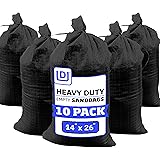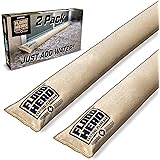Understanding Food Preservation Basics
The Importance of Food Storage
First off, let’s talk about why proper food storage is necessary. You see, when we store food, it’s not just about keeping it from spoiling; it’s about extending its shelf life and ensuring we get the most out of our groceries. Nothing’s worse than opening the fridge only to find that half of your veggies have gone bad. Trust me, I’ve been there!
Food storage impacts not only our wallets by reducing waste but also our health. When food is stored improperly, it can lead to foodborne illnesses. That’s a big no-no! So, having some solid techniques under your belt really helps both in the short and long run.
Understanding the basics of how different foods react to various storage methods can cut down on waste drastically. I’ve seen my own grocery bills shrink ever since I applied these principles—it’s a total game changer!
Types of Food Storage Methods
<h3.Refrigeration versus Freezing
When it comes to storing food, refrigeration and freezing are the two heavyweights. Refrigeration is great for foods you plan to consume soon, like fresh produce and leftovers. However, don’t be fooled into thinking everything can just sit in your fridge indefinitely!
On the flip side, freezing is your best friend for long-term storage. Items like meats, bread, and even some fruits can last months in the freezer. I’ve learned the hard way that not all foods freeze well; some lose texture or flavor. So always check guidelines before popping things in.
Both methods have their pros and cons, and it’s essential to know when to use which. In my experience, finding a balance has been key to enjoying fresh food while not overstuffing my fridge!
Drying and Dehydrating
If you’re looking for a way to store food without needing a fancy setup, drying is a technique you should definitely consider. Drying removes moisture, making it harder for bacteria to grow, which is why dried fruits and veggies are so popular.
There are different methods for drying food, from using a dehydrator to the classic oven method. I’ve tried all sorts—sun drying, air drying, you name it. Each has its quirks, and it’s fun to experiment with what works best for you.
== > What if ... Get a FREE Subscription to PREPARE
One of the best parts? Dried food often has a longer shelf life. Plus, they make for easy snacks! Losing moisture might sound tedious, but it opens up a whole world of storage possibilities.
Packaging for Longevity
<h3.Airtight Containers and Vacuum Sealing
Packaging might seem like a small detail, but it’s the unsung hero of food storage. Using airtight containers is essential for keeping food fresh. I remember once I left some nuts in an open bag, thinking they’d be fine. Spoiler alert—they went stale fast!
Vacuum sealing is another popular option, which is super effective for eliminating air that causes spoilage. I use my vacuum sealer for meats and soups, and it makes a noticeable difference in taste and texture when I’m ready to consume them later.
Finding the right container can make or break your food storage game. Choose glass or BPA-free plastic for lasting quality that doesn’t leach chemicals into your food.
<h3.Labeling and Dating
This one’s a game changer—always label and date your stored food. It sounds simple, but I’ve saved myself from mystery meals in the back of the freezer just by getting into the habit of labeling everything. How many times have you found an unrecognizable bag in your fridge?
Using a permanent marker or label maker makes it easier to keep track of when something was stored and when it should be eaten. Nothing worse than discovering freezer burn on your precious lasagna that you forgot about!
Having that little detail on every container makes it super simple to plan meals. I can look and say, “Hey, I need to use this chicken and these veggies before they go bad.” It’s efficient and saves time, which we all need a bit more of!
The Role of Temperature and Humidity
<h3.Storing Food at the Right Temperature
Temperature control is another vital aspect. I always try to keep my fridge at a steady 37°F. If the temperature fluctuates, it can lead to spoilage more quickly than you’d expect. Plus, hot spots in your fridge can cause uneven cooling.
Get Preparedness and Self-Reliance Tips. Subscribe Now!
Not all food can be treated the same. Some items, like dairy, need specific temperatures to stay fresh. If you’re unsure, just look it up! There’s a wealth of info out there, and taking that extra minute is worth it to avoid food waste.
Storing your food at the right temperature helps retain its quality for much longer. Adapting this habit has genuinely improved how I manage my fridge, and I’ve shared this tip with friends who found it useful too!
<h3.Humidity Control in Storage
Humidity is another sneaky factor that can ruin perfectly good food. Too much humidity can lead to mold, while too little can lead to dried-out veggies within days. I always pay attention to how I store foods that are sensitive to these factors—like fruits and leafy greens.
Bread, for example, needs to be stored in a cooler, drier environment to prevent molding. I used to just leave it out on the counter, but now I make sure to keep it in a tightly sealed container, and it lasts much longer!
Understanding humidity and how it affects storage can enhance your food preservation techniques significantly. This knowledge has saved countless produce and made my cooking much more enjoyable.
Experimenting with Advanced Techniques
<h3.Learning from the Experts
It’s always great to learn from those who know their stuff! I’ve read tons of blogs and watched videos on food storage techniques that go beyond the basics. From fermenting to canning, there’s a wealth of information out there.
One thing I learned from food preservation experts is the importance of trial and error. Don’t be afraid to experiment! The first time I tried fermenting my own pickles, let’s just say it was a learning experience. But now? I’m a pro at it!
Following pioneers in the field has inspired many of my own cooking adventures. Sharing this knowledge has connected me with a fun community of fellow foodies.
<h3.Embracing New Technology
With technology advancing faster than I can keep up, food storage techniques have also evolved. Smart fridges that tell you when things expire? Awesome! I love it when tech meets practicality.
There’s also a ton of apps that can help your food inventory stay organized. I’ve tried a few, and they make it easier to plan meals based on what I have instead of what I think I have. Seriously—saves me so much time!
Embracing these advancements has made maintaining my kitchen more minimalistic and efficient—who doesn’t want that? It’s fun to experiment with all the new tools out there.
FAQ
1. What are the best methods for food storage?
The best methods include refrigeration for short-term storage, freezing for long-term, and using drying techniques for preserving fruits and veggies. Also, remember to package your food properly using airtight containers or vacuum sealing!
2. How should I manage humidity when storing food?
Humidity control is crucial. Store bread in a sealed container to prevent it from getting stale or moldy, and keep fruits and vegetables in a cooler, drier environment. This balance will keep your produce fresh longer.
3. Is it necessary to label and date my stored food?
Absolutely! Labeling and dating your food helps track its freshness and ensures you consume it before it spoils. It’s a simple habit that can save you from a lot of food waste.
4. Can non-perishable foods go bad?
Yes, they can! While non-perishables have a longer shelf life, they can still lose flavor and quality over time. Always check for expiration dates and storage instructions to keep them at their best.
5. What’s the most important thing to remember about food storage?
The key takeaway is to understand the unique storage needs of different foods. From temperature control to proper packaging, taking the time to store food correctly can help preserve its quality and reduce waste.






